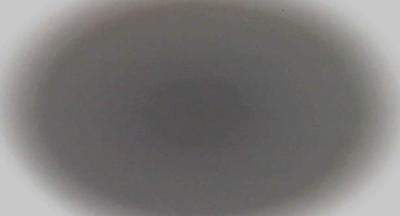The Lecture as Palimpsest
By
Gregory Hayman
2015
Gregory Hayman, film & sound; Anthony Blunt, script; Iain Manson, voice; Pablo Picasso, painting.
The Lecture as Palimpsest
This film work is based on Blunt’s Guernica lecture (published as a book in 1969) and his1979 post-exposure press statement. For the sound I recorded a retired academic with suitable Blunt-like voice, albeit not quite as aristocratic and Edwardian as Blunt’s own. The images are from Picasso’s painting of Guernica put under a microscope.
I try to provide an open, yet enigmatic, piece of writing in a fine art context that raises questions about art and people, and perhaps hints that appearances aren’t always what they seem. The work might also challenge assumptions about what is real, what is commentary and what might be biography. I do this in what I call a ‘docu-lecture’ using only words written by Anthony Blunt. The lecture is real and so is the statement he made. The former might hint at self-justification and the other is.
Kopystiansky’s Strike Against Yugoslavia, shows visuals of people in the street, while purporting to be about something other – something happening at the same time as the people in the street go about their daily lives. In a similar way, I believe that Blunt’s lecture on Guernica (also about bombing and war), is also a meditation on his own political coming to consciousness and contempt for the indifference towards the rise of Fascism.
My work drawing on Blunt’s and Picasso’s is similar to Kopystiansky’s in that it is showing one thing while asking the viewer to contemplate something else. Like Kopystiansky’s, it is not didactic, although Blunt’s authorial voice is, to some extent. I do not ask the viewer to take a position regarding the content of my work and neither do I expect it.
The making has been incredibly long. The work has been through many stages and I have made many versions. Decisions about it, the combination of sound the visual etc have not come easy. I wanted to avoid something that was over-worked and didactic. I wanted to provide openings for the audience and I wanted it to work on many levels. I am keen that people can hear and see it just for what it is – the thoughts of a man about a painting. I am also happy for them to see beyond that. There are no answers. But equally there are no questions.
People have said it is ambitious, and accessible and visually interesting. People have questioned whether the sound is found, i.e. have I used a real recording of Blunt? The answer is that he did not record any of his lectures as far as I can find. Neither did he do any radio lectures, as was common at one time.
The work should be carefully positioned along with a screen print of the title page of the Blunt book on Picasso, which I found and had been defaced with marks and graffiti. The print is framed and given the status of artwork, whereas the film piece has not. I want to question the use of lecture as artwork, is it a real lecture, is it an artwork masquerading as a lecture, or is it some curious hybrid. The slippages between fact and fiction, between narration and news, between personal statements and post rationalisation are all implied.
The context is one that draws on work of Elizabeth Price and Duncan Campbell and others who present fact and discussion in their work. My work differs from the work of Provoust who plays with fictional narration, but my work utilises narration as a device, but my narration is not created by me or indeed delivered by me, but by a third party, which might or might not be, the reader Anthony Blunt.
Helping Artists Keep Going
Axis is an artist-led charity supporting contemporary visual artists with resources, connection, and visibility.



